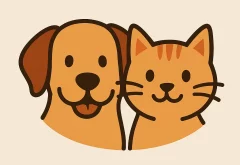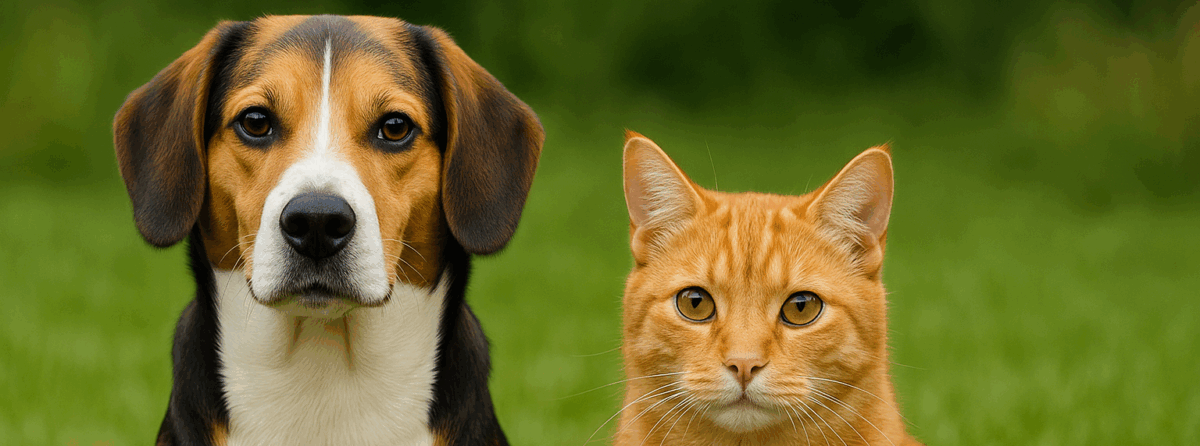I’m Kayla Sox. I live with two big goofs: Moose, a 4-year-old Great Dane (about 140 pounds), and Dot, my 11-year-old Lab mix (58 pounds and nosy). I switched them to Gentle Giants dog food after a messy spring. Moose had gas that could clear a room. Dot’s coat went dull, and her hips looked stiff on cold mornings. I wanted something kinder on their bellies, but still solid on nutrition.
Want to see the granular ingredient notes and true cost math? I posted them in a dedicated Gentle Giants case study on Pet Care Services.
I also pored over an independent Gentle Giants dog food review on Petful before I hit “add to cart,” which gave me a baseline to compare my own results against.
True story: during one of those late-night research rabbit holes, I found myself toggling between canine nutrition forums and articles about how people handle discreet relationships online. If curiosity ever takes you down that second path, this in-depth Heated Affairs review breaks down the dating site's features, pricing tiers, and privacy safeguards—valuable intel before you dive into romance that can get messier than a Great Dane with tummy trouble. Or maybe your next “meet-up” has nothing to do with dog parks; if you’re near Pittsburg and want an adults-only social scene that’s as straightforward as kibble math, the local rundown at Pittsburg swingers walks you through upcoming events, membership costs, and ground rules so you can decide if the vibe fits before leashing up for nightlife.
Here’s the thing: I was skeptical. But I tried it for a full month. Two bags. Real feeding notes. Real results.
What I bought and how I used it
- Dry food: Gentle Giants Salmon (30-lb bag from Walmart, around $50).
- Cans: Turkey stew style, for Dot’s evening topper, twice a week.
- I did a slow switch over 7 days. I mixed a little, then a little more.
- The kibble is medium, flat discs. Smells like, well, fish. Not gross, just fishy.
The company suggests adding warm water to the kibble. I did. Moose liked the “gravy.” Dot didn’t care; she eats like a vacuum either way.
Week-by-week: real notes from my fridge whiteboard
I keep a marker and write things down. It helps me see patterns.
- Week 1: 25% Gentle Giants, 75% old food. Moose had two loose stools on day 3. Not scary. Dot did fine. Gas lower by day 5. I nearly cried from joy.
- Week 2: 50/50 mix. Moose’s poop turned “log” shape again (sorry, dog people talk). Dot’s coat felt less dry. I added warm water at dinner for both.
- Week 3: 100% Gentle Giants. Moose got 6 cups a day, split into 3 meals. Dot got 2.5 cups, split into 2 meals. Stools firm. Less smell. Energy steady, not wild.
- Week 4: Still good. Dot hopped in the car without that slow, careful pause. Moose didn’t have that midnight “I need grass” whine. I slept better.
You know what? The gas fix alone made me want to buy the next bag.
Taste test, canine edition
Moose is picky for a giant. He sniffed, then ate. No drama. Dot would eat a shoe, so that’s not data. But I did notice this: with warm water, Moose slowed down and chewed. That helped his burps, which helped my evenings.
For context, these two will sample almost anything—Moose even accepted a bite of roasted eggplant during last summer’s barbecue (full story here).
What I liked (and what I didn’t)
Pros:
- Gentle on tummies. Both dogs had fewer tummy issues.
- Coats looked better by week 3. Dot’s fur felt softer at the shoulders.
- Steady energy. No sugar rush, no crash. Good for long walks.
- Kibble size worked for big jaws. Less gulping with the warm water trick.
Cons:
- The salmon bag smelled strong. I stored it in a sealed bin.
- Some kibble “dust” at the bottom of the bag. Not a deal breaker.
- Bag wasn’t resealable, so I used a clip and a bin.
- Price is mid-high for a big bag. Not fancy, but not cheap.
Little things that mattered
- Feeding small, more frequent meals helped Moose a ton. I did breakfast, mid-day, and dinner for him. Two meals for Dot.
- Warm water over kibble made a simple gravy. That helped Moose slow down and may have helped his burps.
- On a hot August week, they still ate well. No food refusal.
- Poop pickup got easier. Less mush. More… pick-up-able.
If you want to see exactly how the founders feed their own giant-breed crew—including why they swear by adding water and smaller, spaced-out meals—the company publishes a free special feeding and care program that’s worth skimming.
A quick peek at the label, the simple way
I won’t bore you to death, but I did read the back:
- It’s all-life-stages, so puppies and seniors can eat it. That made traveling easier for me.
- Moderate protein and fat. Nice for big breeds that don’t need high-fat food.
- No neon colors or fake bits. The kibble looks plain, which I prefer.
If you want an easy reference chart for portion sizes and nutrient targets, check out the free guides at Pet Care Services.
If your dog works hard (farm dog, sled, agility all day), you might want more calories per cup. But for pet life, long walks, and couch time? This held steady.
Real-life feeding math
- Moose (Great Dane): 6 cups a day, split into 3 meals. If we hike, I add half a cup at lunch.
- Dot (senior Lab mix): 2.5 cups a day, split into 2 meals. I add a spoon of canned turkey twice a week. For joy. On especially hot afternoons, I swap that canned topper for a frozen spoonful of plain Greek yogurt—it’s pup-safe when served in moderation (here’s the deep dive I wrote on dogs and Greek yogurt).
Water bowls stayed full. I watched for bloat signs (I’m paranoid with Danes). Slow eating and calm after meals helped.
Any hiccups?
Two things:
- Day 3 loose stool for Moose during the switch. It passed. In the past I would have defaulted to the classic bland-meal of chicken and rice if the runs had lingered—here’s my go-to rice-feeding protocol for pups if you ever need it.
- Fish smell. Store the bag well and you’ll forget about it.
Also, I wish the bag had a zip top. I use a gamma lid bin, which fixes it.
Who I think will like Gentle Giants
- Big breeds with belly drama.
- Seniors who need steady energy and easy digestion.
- Dogs with dull coats who might benefit from a salmon formula.
- Families who feed smaller, more frequent meals.
Maybe skip it if your dog needs very high fat or very high protein. Or if the fish smell makes you gag.
My verdict, plain and simple
After a full month, I bought another bag. Moose lost the gas. Dot moved easier. Poops were better. The cost felt fair for the relief I got in my house.
Score from me: 8.5/10. Not perfect, but pretty darn close for my crew.
If you try it, do a slow switch, add warm water, and split meals. Keep notes for two weeks. Your nose—and your dog—will tell you if it’s working.
— Kayla Sox

